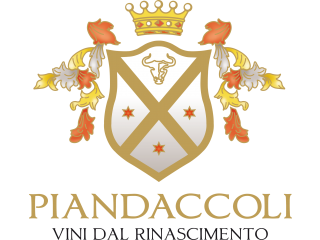

| Sangiovese, Pugnitello, Foglia Tonda |

The exceptional nose explodes with notes of sweet spice, mint and graphite, culminating in an aromatic crescendo of plums and cherries. The great structure, alcohol balance and fresh notes characterized by soft and velvety tannins combined with an intense aromatic persistence, make this wine extremely pleasant on the palate.
Appellation |
Toscana I.G.T. |
|---|---|
Vineyard |
The vineyards lie close to deep and fresh ravines which are the result of extraordinary geological formations called Piandaccoli, which have the outstanding advantage of bringing a variable to the microclimate in the area, triggering ascending currents which mitigate high temperatures in summer. Soil management aims to provide defense against erosion, aiding conservation and the creation of a physiological balance and the regulation of the vegetative-productive activity of the vineyard, with direct and indirect effects on physiopathologies. Soils consist of clay and river stones, and the vineyards are under organic conversion and utilize biodynamic methods. |
Vinification |
The hand-harvested clusters are de-stemmed using a vertical vibrating system, which leaves behind dry and underripe grapes. Gentle pumping over occurs in steel tanks and a Bucher press compresses the marc while preventing the crushing of the grapes to minimize the releasing of tannins. The use of older 55hl barrels and smaller tonneaux help to limit the influence of wood in the developing wine. Aged in wood for 12 months followed by an additional 15 months in the bottle before release. |
Pairing |
Pairs with red meats, roasts, medium and long matured cheeses, and salami and other charcuterie. |

The estate began with the cultivation of vineyards by monks in 1100, before the phylloxera epidemic that hit Europe in the mid-nineteenth century wiped out the indigenous varietals present in Tuscany. Piandaccoli emerges in 1950 with the production of Chianti, but it was the vision of Dr. Giampaolo Bruni that set the stage for this incredible winery's future. He collaborated with the University of Florence, using DNA testing on grapes found in the Medici tombs, to reintroduce autochthonous varietals prevalent during the Italian Renaissance.